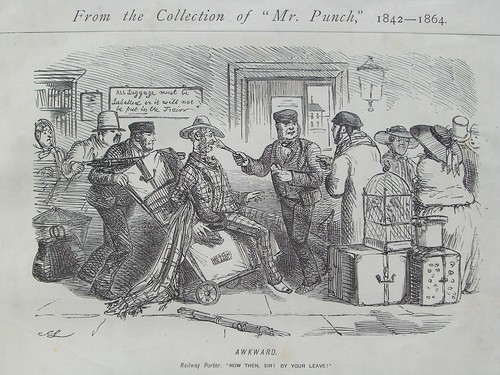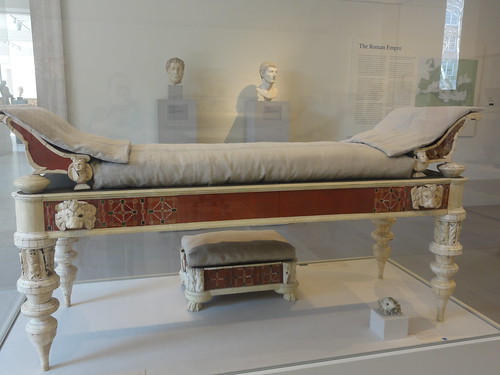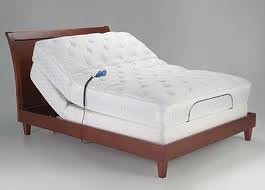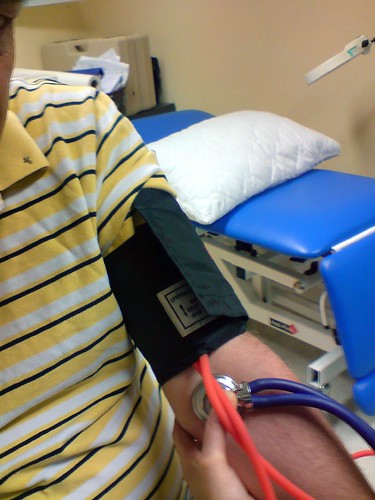"Contrary to my image, I do have a sense of humour"
Andy Murray
However, humour must have parameters. There is no place for hurt or gratuitous offensiveness. It is a matter of regret that some current exponents fail to respect or even be aware of such a concept. The best and acceptable form of censorship ought to be the audience. In the days of the Music Hall, a comic soon knew that they were unacceptable from the reaction of the crowd who were ready to boo them off stage!
It seems that today's audiences are lacking in any discrimination when the language, gestures and subject matter oversteps the bounds of acceptability. The media, including the BBC and other bodies, rather than curb the content, actually promote it and in the case of the BBC pay for it with public money. They even introduce recorded laughter, abruptly turned on and off by a switch, to give the impression of audience appreciation. This is the tail wagging the dog, telling us that what we hear is funny!
Historically, in Elizabethan times, the 'humours' referred to the four main fluids in the body - blood, phlegm, yellow bile (choler) and black bile (melancholy). These were thought to determine both physical and mental health.
'So it is, besieged with sable-coloured melancholy, I did commend the black oppressing humour to the most wholesome physic of thy health.'
('Love's Labour's Lost' - William Shakespeare)
Humour as a noun can be said to be the quality of being amusing, or comic, especially as expressed in literature or speech:
- his tales are full of humour
- The ability to express humour or to amuse other people: they entertained us with their own inimitable brand of humour
- Humour can be a state of mind: she faced it all with her usual good humour
- As a verb, humour can mean to comply with someone's wishes, even if one does not approve, to prevent trouble or to 'keep them sweet': just try to humour him, it will be easier for everyone
Rowan Atkinson ( Blackadder and Mr Bean) says that a person or object can become funny in three different ways: by being in an unusual place by behaving in an unusual way by being the wrong size. Here is a clip from Blackadder.
A sense of humour is almost impossible to define or evaluate. Just where it originates in our personality is impossible to say. Clearly it is common to most, perhaps all people but not in the same measure. Some people appear to have very little humour and what one person finds very funny can be quite lost on another.
'When I first met my boss, I thought she had little sense of humour. I was wrong. She has none at all.'
Frank Carson once said that he found most of his material in real life situations. He recalled an occasion when he agreed to visit a home for the elderly in Blackpool. He found himself talking to a lady who looked at him somewhat quizzically.
"Do you not be knowing who I am?" he asked.
The lady answered him. "I've no idea love but if you ask matron she will be able to tell you."
You just could not make it up.
Some types or genre of humour
Character comedy or Sitcom
Sitcom is scripted and is common to many TV comedy programmes. The humour revolves around strong central characters. Some examples of this are 'Dad's Army', 'Porridge, 'Allo Allo', 'Open all Hours', 'Only Fools and Horses', 'Blackadder', 'Yes Minster', 'One Foot in the Grave', 'Last of the Summer Wine', 'Fawlty Towers', 'Rising Damp', 'The Office' and 'Dinner Ladies'.
Black comedy - (sometimes called a 'Sick Sense of Humour')
This deals with what are potentially disturbing subjects. Many people would question the acceptability of this genre. It is interesting to note that whenever a natural disaster, terrorist atrocity, sexual scandal, or any event occurs which should fill us with shock or horror, within hours the jokes begin to circulate. It is often the case that they can in fact be funny and I think it is our way of diffusing situations, almost a way of dealing with the pain and unacceptability of such events. As is so often the case with humour, where is the line to be drawn between acceptability and the totally inappropriate and who is qualified to draw it?
Blue Comedy
Blue comedy is typically sexual, often expressing sexism, racism and homophobic sentiments.. It also embraces vulgar or profane language. It is, I think, regrettable that many of today's comedians find the use of the F word essential and almost compulsory if an audience is going to find them funny. Amongst others, this blue material is common to Jim Davidson, Chubby Brown and Bernard Manning. I never recall hearing the late Ronnie Barker, Eric Morcambe, Frankie Howerd, or Les Dawson, or Frank Carson,true masters of comedy, use any vulgar expletives.
Deadpan comedy
Whilst not a very common style, so called 'deadpan' is the art of telling a joke or being in a situation without any change of facial expression or expressed emotion. This style is associated with Peter Cook, Dudley Moore, Les Dawson and Jimmy Carr.
Musical comedy
The use of music and lyrics, a classic example being the works of Gilbert and Sullivan.
Slapstick or physical comedy
This is an old style, dating back to the days early films and the music hall, but still used today. Amongst the exponents are Charlie Chaplin, The Three Stooges, Norman Wisdom, Max Wall, Jerry Lewis, Robin Williams, Rowan Atkinson and to a point Michael McIntyre.
Sketch
Sketches are similar to sitcom, but much shorter and often performed live. In this category we can list Monty Python, French and Saunders and Fry and Laurie.
Pantomime
A traditional mix of humour, music, and slapstick, all focused on a Dame, usually played by a man. A popular choice is the story of 'Cinderella'. Cinders, Buttons and the ugly sisters all feature and characters akin to Paul O'Grady's Lilly Savage enjoy a raucous almost vulgar romp. 'Panto' is traditionally a Christmas show in many towns. In the Potteries, the Regent Theatre is packed for the annual show.
Satire
It was the late Sir David Frost who may be said to be the founder of TV satire with 'That was the Week that Was' This was 1962. Deference to the establishment was out and the Beatles were in. Oxbridge had inflicted 'Beyond the Fringe' on the unsuspecting country and 'Private Eye' was set to expose the skeletons in many top cupboards. Published fortnightly the magazine currently has 700,000 readers. Ian Hislop (editor of Private Eye)and Paul Merton continue the satirical look at current affairs in 'Have I Got News for You'. I think satire serves a purpose and can indeed be humorous as a result of the very quick wit of the above gentlemen. On the downside, it can be a tad harsh and unfair when those who cannot answer back are the target of those who earn large amounts of money by passing judgement on others in the name of humour. Satire is not the prerogative of the 21st century. The first satirical magazine was published in 1841 and carried the name 'Punch'. The cartoon, or humorous illustration about a topical issue, had its origins in 'Punch'. The original cartoon was not the same thing and was a preliminary drawing or sketch used in the preparation of murals or other paintings. 'Punch' was to enjoy great popularity during the 1840s and 1850s. It became a British institution but slowly went into decline in the 1940s. It finally closed in 1992. It was revived in 1996 only to close for good in 2002.
 |
| Image:Flickr-aussierupe |
Humour has both national and international hallmarks. 'There was an Englishman, an Irishman and a Scotsman' has been the formula for introducing a joke for many years. Why, I wonder, does a Welshman never feature? Are the Welsh lacking in a sense of humour? I cannot imagine that is the case. After all, Wales and rugby of course, gave birth to Max Boyce. South Wales has a distinctive brand of humour.
A funeral cortege was passing close to a golf course. Dai put down his club, took off his cap and paid a respectful silence as the hearse passed by. "All for good old fashioned respect down by yer, Buttie Boy, but that's a bit over the top isn't?" "Not really lads, we were married for thirty years!"
Humour is certainly a part of culture and one nationality may not understand or appreciate that of another.
"I prefer the finesse of French humour. English humour is more scathing,
more cruel, as illustrated by Monty Python and Little Britain."
Dame Helen Mirren
Appreciation of different brands of humour may well be dependent on a blend of a number of factors: gender, age, education, geographical location, culture and intelligence.
The humour of Stoke-on-Trent, or 'The Potteries' is similar in its spontaneity to the traditionally funny humour of Liverpool. From Ken Dodd and Jimmy Tarbuck to John Bishop, Scouse humour is in a class of its own. Liverpudlians are just naturally funny. Social deprivation and working class attitudes seems to go hand in hand with humour. Marx said that "religion is the opiate of the working classes" - but humour would be a better choice.
During the First World War, two soldiers of the North Staffordshire Regiment received their Red Cross parcels and post. A young Tommy, having read his letter, began jumping up and down with excitement with is head above the parapet.
Sergeant: "What's up with they, get thee head dine! "
Tommy: " Mar lady says I'm goin be a faither!"
Sergeant: "You, a faither? Dunner towk soft wa've bin in this trench over a twelve month!"
Tommy: "So what? There's two years between may and our yuth."
It is important to be able to laugh at one's self. The best Jewish humour emanates from Jewish comedians. The same is true of Liverpool and Stoke-on-Trent. A Liverpudlian friend of mine asked me:
"How do you know that a Scouser has been in your back yard? The wheelie bin is on bricks."
The current obsession with political correctness must never be allowed to ban genuine humour. I asked my friend if people in Liverpool would find the joke offensive?
"Of course not. If it is a choice between laughing and crying, then it is better to laugh. Never take yourself too seriously."
In Victorian times, a new social phenomenon emerged; trips to the seaside. Workers from Stoke-on-Trent and Liverpool flocked to the new resorts such as Blackpool, with its beach, fun fair and of course the famous Tower. The advent of the seaside resorts brought with it a new culture, both saucy and innocent and perhaps worryingly sinister. The saucy seaside postcard, with an unmistakeable artistic style, brought daring innuendo into the shops. The good humoured saucy postcard was one thing, but, the Punch and Judy Show, aimed at children, is perhaps more questionable. Punch and Judy was the blueprint for today's soap operas.
 |
| Image:Flickr-steve wilde |
Punch and Judy is a traditional puppet show, featuring Mr Punch and his wife Judy. The show is not a modern invention. Punch and Judy has its roots in Italian commedia dell'arte, as early the 16th century. Incidentally, Judy was originally called 'Joan'. Typical of Potteries humour, friends of mine, well known in Newcastle under Lyme, kept 'The George and Dragon'. Tony is married to Joan, and people would ask if George was in!
The original Mr Punch was a character called Pulcinella, anglized to Punchinello, hence Punch. Mr Punch's UK first appearance in England is thought to have been May 9th. 1662. Ironically, that year coincides with Archbishop Cranmer's 'Book of Common Prayer'.
Known since Victorian times as the "Professor" or "Punchman" a single puppeteer stands in a booth and manipulates the hand puppets, usually, Mr Punch, Judy, a baby, a dog, a policeman and a crocodile. The Professor sometimes had a "Bottler" who would encourage the crowd to put money in a bottle. The audience were encouraged to take part, shouting warnings to the puppets if danger was at hand. This is a similar tradition to Pantomime - "He's behind you" "Oh no he isn't"
The diarist Samuel Pepys records seeing Punch and Judy in Covent Garden and when the tradition reached America even George Washington bought a ticket! The original booths were dull-makeshift affairs made to be carried around the country. In the 20th century, red and white stripped booths became iconic in the new seaside resorts.
Originally, the show was intended for adults. It was often violent and the puppets reflected some dark subjects. In the late Victorian era, the target audience became children. The content was adapted to make it suitable for a younger audience. The character of the devil was removed along with Punch's mistress -'Pretty Polly'. I wonder how this name became synonymous with a parrot? Perhaps it was the gaudy coloured feathers and a squeaky voice which began with Mr Punch's attraction to his mistress against the plainness of Judy his wife. Perhaps nothing much in society has changed! Mr Punch was always a fearsome character. He wears a brightly coloured jester's motley and sugarloaf hat with a tassel and carries a long stick (a slapstick) which he uses to beat the other characters. He is a hunchback whose long hooked nose almost touches his curved jutting chin. He speaks in a shrill squawking voice which was produced by the use of a device called a swazel held in the Professor's mouth. It is surprising that the character is still thought appropriate for children. He is a bully, baby basher and wife beater. He delights in gleeful self-satisfaction which gave rise to the expression " as proud as punch".
Stoke-on-Trent, in common with other areas, has its own dialect and accent.
"Ar to toke rate" is a guide to speaking Stoke.
A few examples may be of help here.
afread - afraid
dyead - died
drownded - drowned
aks - ask
dost - do you?
ducker - a flat pebble
all but - nearly
dollop - a lot
dunna - don't
fang - take hold
flummoxed - bothered
funt - found
furk - to look for something
gob - mouth
It is said that all North Staffordshire and especially Pottery dialect is contained in certain expressions.
"Dust ere, if thee astna got anythin woth sayin then dustna say anythin at ow,orate?
"Do you hear? If you haven't anything worth saying don't say anything. Alright?"
Stoke-on-Trent, or 'The Potteries' comprises six towns. Arnold Bennett got it wrong when he wrote 'Anna of The Five Towns' From north to south they are Tunstall, Burslem, Hanley, Stoke, Fenton and Longton. A history of Tunstall has already featured in another of my articles.
Potteries dialect and humour is best illustrated by two cartoon characters, 'May un Mar Lady' (Me and the Wife). The cartoon characters were created by Dave Follows and appeared in The Sentinel newspaper. The series first appeared on July 8th 1986 and soon became a part of Potteries culture. Dave Fellows sadly passed away in October 2003.The simple three window sketches feature a dominant wife and her frustration with her irresponsible and perhaps lazy husband who is impervious to her nagging. In one sketch, the husband cannot get to sleep and 'Mar Lady' tries to find out why:
"Eets neow good ah conna get ter slayp"
"At thay werritin abite th' rent bayin thray wicks overdue, the final demand fer th' reets un 'ow way're gooin 'ter peey next months car instalment?
'Nar, ther's a rumour that Th' Potters Arms is gooin ter cleowse dine."
Perhaps Mr Follows should have supplied subtitles? A animated test from 2008 is featured on Youtube below.
Humour can be found in some unlikely topics and objects.. For example, can there be any humour to be found in a stair lift? Surely not. Well, I was wrong. A major supplier of stair lifts, Castle Comfort Centre, whose head office is located in Wolstanton, Newcastle-under-Lyme, Staffordshire certainly think so and in fact have a website dedicated to the topic! (See stairlift cartoons site here)
How about those of you with a feline of senior years? Perhaps treating her to a lift up those stairs?
 |
| Image:stairliftcartoons.com |
Here's some more of the typical Stoke humour from www.stairliftcartoons.com
- A stair lift for dogs has been designed, it's made by a company in Barking.
- Mother to son: "You must get my stair lift serviced, it's driving me up the wall"
- Wife to husband: "I hope we never get to the age when we need a stair lift."
- Is there a stair lift in the Rover's Return? If there is, Tracey will soon have it across at the second hand shop.
Joking apart, one couple allegedly installed a chair lift for their dashshund following spinal surgery. Here's a picture of a visitor to their stairlift showroom and a pet dog getting measured up for a stairlift.
 |
| Image:-Courtesy of stairliftsdoctor.co.uk |
Any consideration of humour, and Stoke-on-Trent humour in particular, could not come to a better conclusion than with a song, written in the early 70s, by Brian Berrington. Brian was a member of the Stoke-on-Trent Folk Club. He worked in the Pottery Industry all of his life, for one period at Grindley's in Tunstall, close to the Town Hall, now the home of the Tunstall Indoor Market.
He recalled the time in early 1950s when the firm was making Coronation commemorative mugs.
A group of management, including Colonel Grindley, were gathered by a kiln, expectantly awaiting the appearance of the first batch of these prestigious items.
The MD arrived and appearing rather agitated enquired what on earth was going on?
"We are looking for mugs" he was told by way of explanation.
A long serving worker, in cloth cap and white smock, turned to another and mumbled, "And ays funt us!"
The importance of such local humour does not end with just being funny. It is a valuable social history of the lives of ordinary real people who were the heart of an industrial area, now, sadly, largely gone but the spirit and humour of Potteries folk is still as real as ever.
Overheard in Tunstall Market, a lady referring to her teenage grandson's girlfiend:
"What's her like?
A right useless article, but then so is he."
It was this from environment that Brian acquired not only a love of the people of Stoke-on-Trent, Newcastle-under-Lyme and North Staffordshire in general and perhaps more poignantly, a love of their humour. The material is reproduced with the kind permission of Kay, Brian's widow.
Brian of course sang the song in a Potteries accent, the spelling of which I will attempt with apologies to the purists!
'Burslem Wakes'
"There was Willy Clough and Jim McGough and 'Arry Lowndes and may
Wain thought as us would tak the buz to Blackpool by the sae
For many a dey way saved us pey and only drank at neet
Agin the dee waid be awey all on us Blackpool trate.
From the 4 in Hand you understand wey left one sunny dee
The lads and may on th' PMT and up the motorway
Wey brought us fags in paper bags with us snappin safe inside
And wey thought of the fun as was to come dyne by the rollin' tide.
At Preston tayn they set us dyne for get us a cuppa tay
I supped me cup then opened up the cawd oatcake and chaise
Then off once more to Blackpool shore and the salt smell of the sae
Went Willy Clough and Jim McGough and 'Arry Lowndes and may.
Wey took an hour went up the Tower for sey the famous view
Then wey came dyne went inter tyne for get a pint or two
Or three or four, or maybe more then off way went for say
If wayne coud get a bit o' skirt for t'other thray and may.
I lark the wey the skirts todee rise 'igh above the knays
There's lots of thigh to great the eye and they're designed to plaise
Withite more words wayne funt fower birds then off ter Squires Gate
Ter get some fun on the coaster run and our luck the Whale of Fate.
We went fer tay at the UCP for cod and chips and paise
All I could say as I supped may tea was my birds shapely knays
When Willy Clough said "Add enough" mar mind on 'er were set
Ah said "Oh no I must be slow I anner started yet."
It was gerrin dark so in the park way took 'em for a woke
The other thray left 'er and may fer sit un 'ave a towk
'Er soft red lips were oiled with chips
'Er muttered sweet and low
"I do love you so come on do before we 'ave to go."
The hours flew by and with a sigh she murmered 'Theet so strong
Oh don't yer know I want you so how come you are so long?'
Then suddenly I pushed her free and stood up with a cuss
'Well what's to do? Well thanks to you I've gone and missed the buz.'
Its a long long woke all in the dark from Blackpool down ter Stoke
And memories of a pair of knays dunner 'elp yer when your broke
And passions 'igh beneath the sky just mak yer swear and cuss
When nearly there if you declare 'Ave bin and missed the buz.'



















